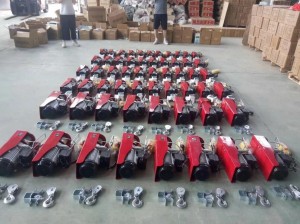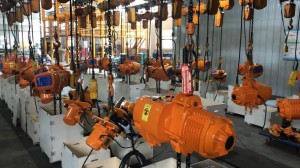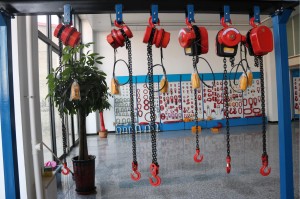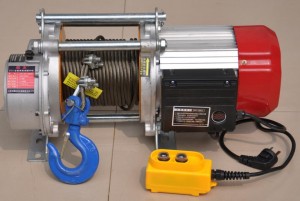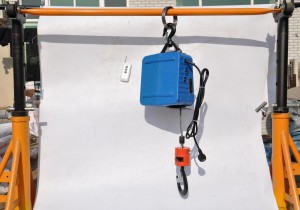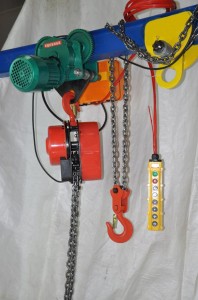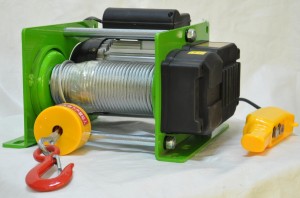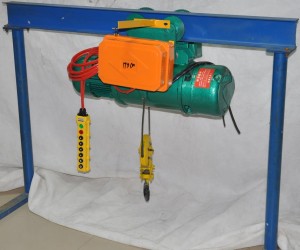An electric hoist is a mechanical device that is used to lift and move heavy objects using an electric motor. It typically consists of a motorized drum or pulley system that is connected to a chain or wire rope. The motorized drum or pulley rotates to wind the chain or wire rope around it, which in turn lifts the load attached to the other end of the chain or wire rope.
Electric hoists are commonly used in a variety of industries, such as manufacturing, construction, and transportation, where heavy materials or equipment need to be lifted and moved efficiently and safely. They are particularly useful in settings where manual lifting would be difficult or dangerous, or where precise positioning of the load is required.
Electric hoists come in various sizes and capacities, ranging from small handheld units that can lift a few hundred pounds to large overhead crane systems that can lift tens of thousands of pounds. They can be operated by a wired or wireless remote control, or through a control panel attached to the hoist itself. Safety features, such as overload protection and emergency stop buttons, are typically built into electric hoists to prevent accidents and ensure safe operation.
Sure, here are some additional details about electric hoists:
Types of Electric Hoists:
There are several types of electric hoists available, including:
Wire Rope Hoists: These hoists use a wire rope as the lifting medium and are typically used in heavy-duty applications.
Chain Hoists: These hoists use a chain as the lifting medium and are commonly used in applications where the load is relatively light.
Trolley Hoists: These hoists have a trolley that runs along a track, allowing the hoist to move horizontally in addition to lifting the load vertically.
Portable Hoists: These hoists are designed to be easily moved from one location to another and are commonly used in construction and maintenance applications.
Components of Electric Hoists:
Electric hoists are typically made up of several components, including:
Motor: The motor is used to power the hoist, providing the energy needed to lift and move the load.
Gearbox: The gearbox is used to reduce the speed of the motor and increase the torque, allowing the hoist to lift heavy loads.
Drum or Pulley: The drum or pulley is used to wind the wire rope or chain, providing the lifting force.
Control System: The control system is used to operate the hoist, allowing the operator to lift, lower, and move the load.
Safety Features: Electric hoists typically have several safety features built-in, such as overload protection, emergency stop buttons, and limit switches to prevent the load from being lifted too high or too low.
Applications of Electric Hoists:
Electric hoists are used in a wide variety of applications, including:
Manufacturing: Electric hoists are commonly used in manufacturing plants to lift and move heavy equipment and materials.
Construction: Electric hoists are used in construction to lift and move materials to different floors or levels of a building.
Transportation: Electric hoists are used in transportation to load and unload cargo from trucks, ships, and planes.
Mining: Electric hoists are used in mining to lift and move heavy equipment and materials underground.
Entertainment: Electric hoists are used in the entertainment industry to lift and move stage equipment and props.
Post time: Jul-18-2023





